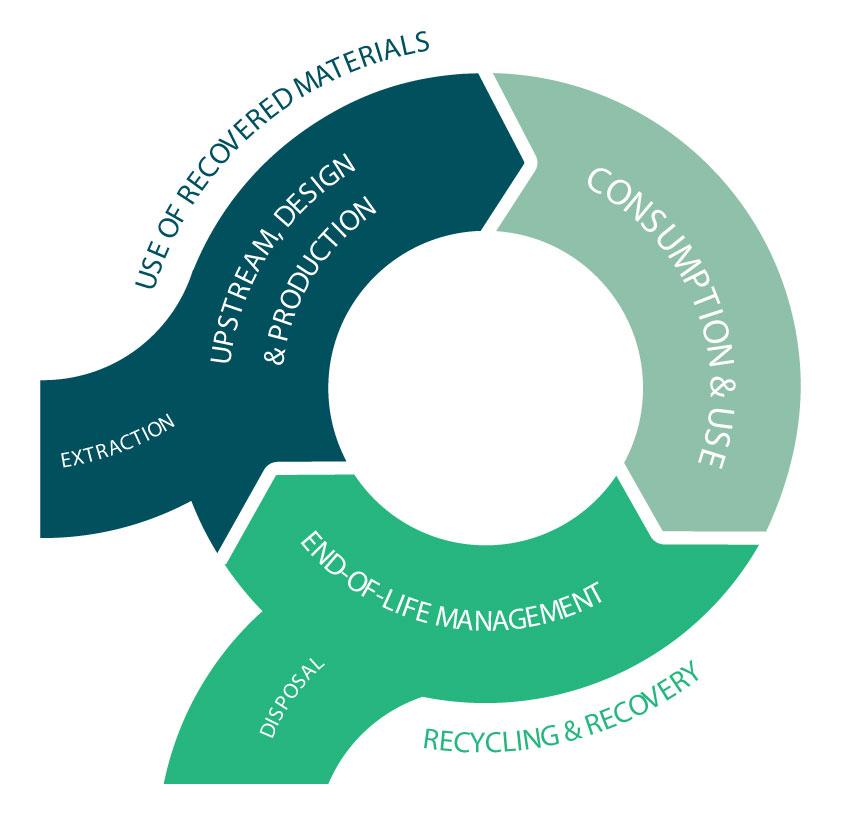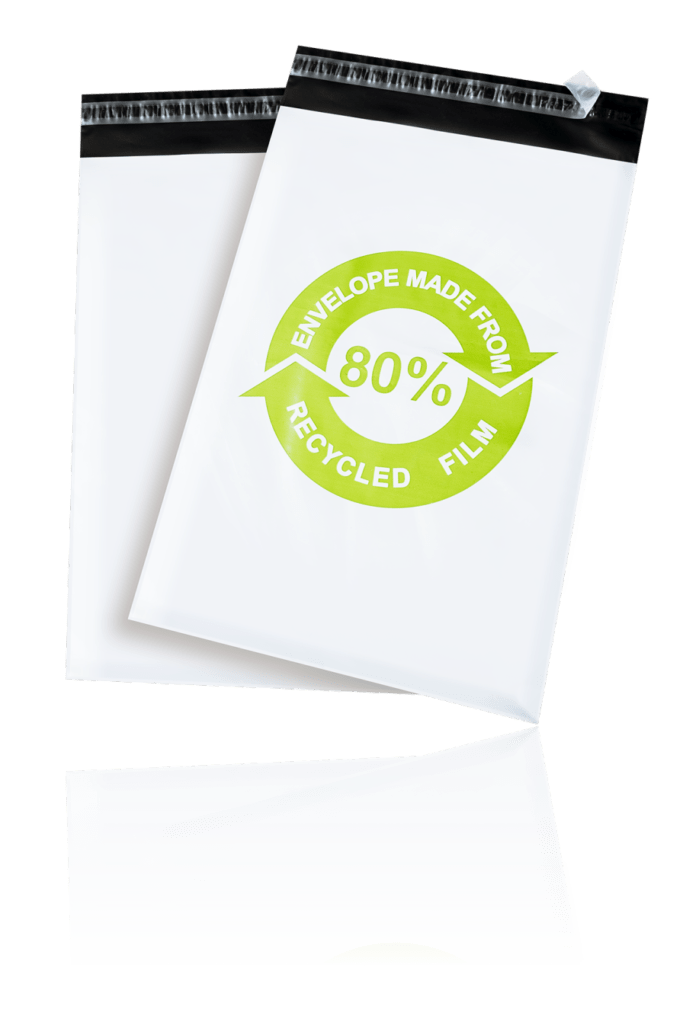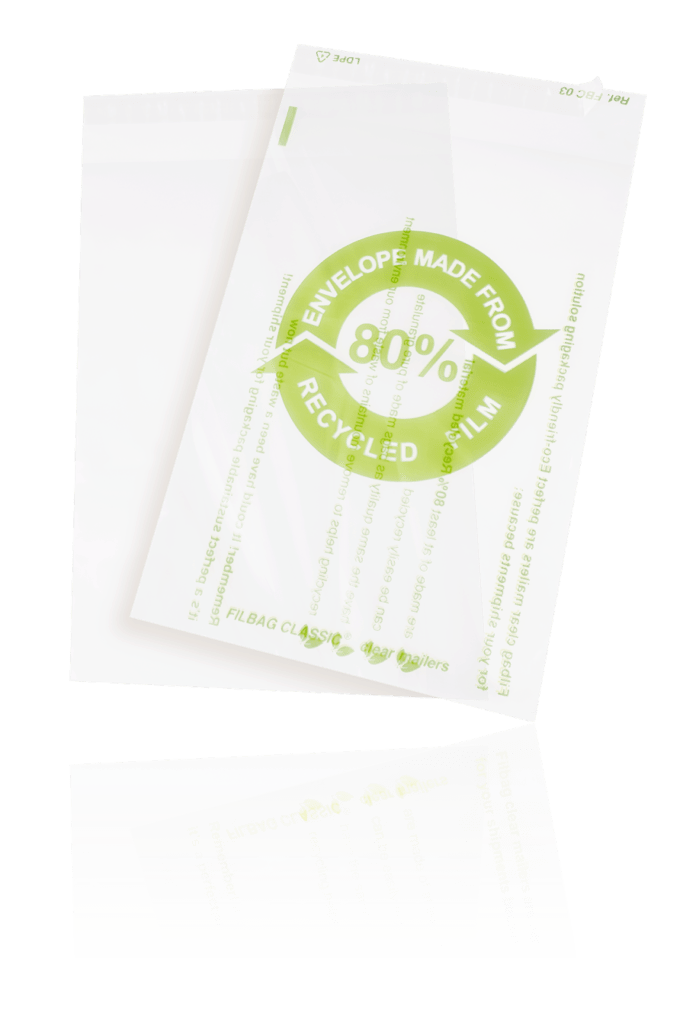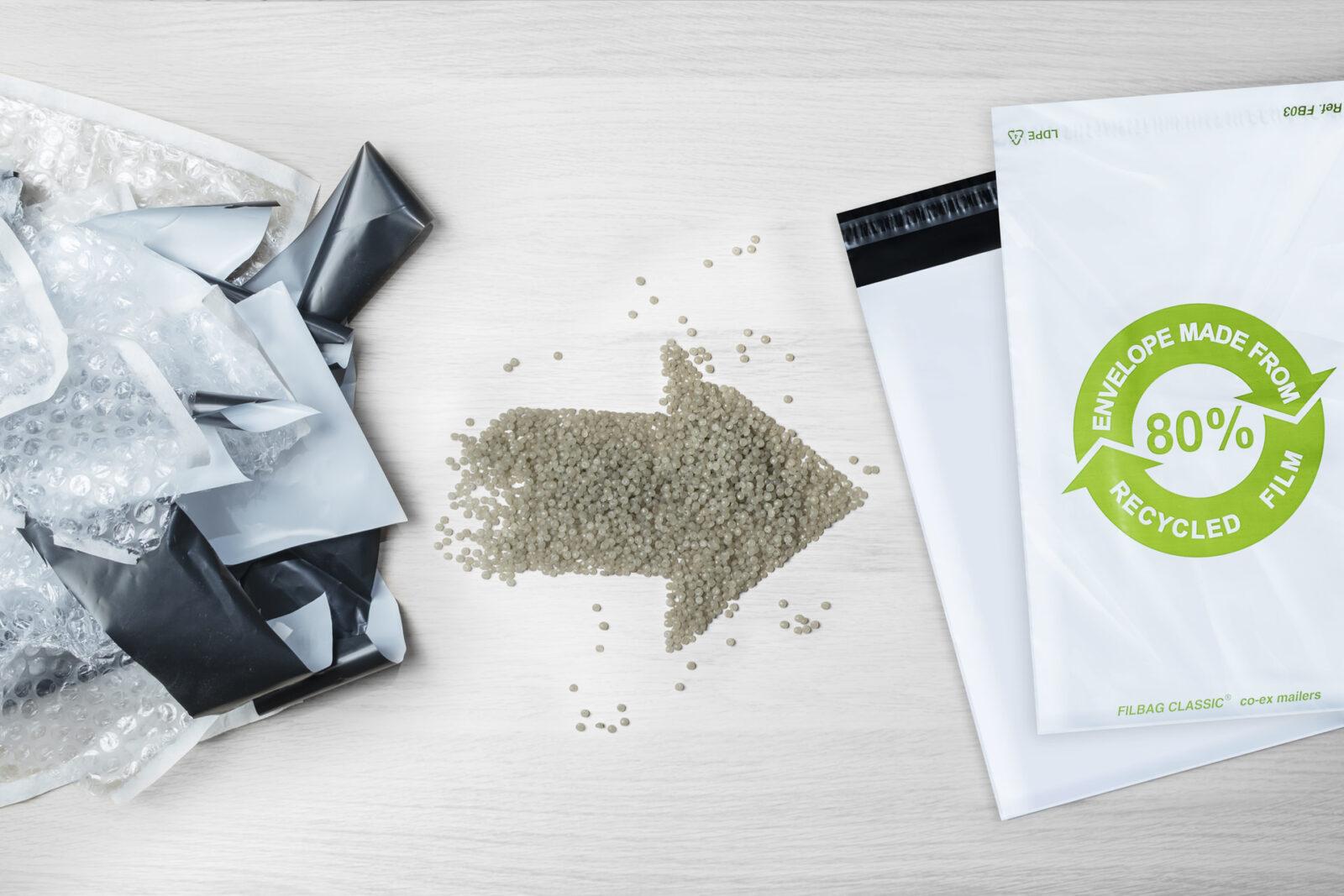

In a recent study, it turned out that 52% of all Europeans think that cardboard is the most eco-friendly mailing packaging. But is it really the case? In fact, many people only look at the natural-looking aesthetics of the packaging and forget that for a product to be ecological, we need to look at its full cycle, i.e. from the sourcing of raw materials to its disposable after use.
A crucial aspect that affects the carbon footprint of paper or plastic production is the energy used for extraction and processing. In 2011, a research paper produced by the Northern Ireland Assembly underlines that “it takes more than four times as much energy to manufacture a paper bag as it does to manufacture a plastic bag.”
Despite being a natural resource, the production of paper consumes indeed 2,7 times more energy and generates 1,6 times more greenhouse gases than in the case of plastic production. According to the Environmental Paper Network’s Paper Calculator, it takes about 32 million BTUs of energy to produce 1 ton of virgin paper fiber. The amount of energy is reduced in the case of recycled paper: 22 million BTUs for 1 ton.
Also, paper production requires much more water than plastic, approximately 17 times more. Even a basic piece of A4 pulp paper has swallowed up to 20 liters of water during its production. In fact, the product of paper is a very thirsty business: trees need water, once they have been made into wood chips they are boiled in a watery-chemical solution, and finally the bleaching is actually the most water-intense part of the production.
Let us not forget either about the impact of paper versus plastic during transport! Paper bags are between six to ten times heavier than lightweight plastic carrier bags and, as such, require more transport and its associated costs. As a comparison, it takes about 7 trucks to transport 2 million paper bags, compared to 1 truck required for the same amount of plastic bags.
Last but not least, using paper bags generates five times more solid waste than using plastic bags. Among the waste generated by the paper and pulp industries we do not only find paper and packaging waste, but also find treatment sludges, lime mud, lime slaker grits, green liquor dregs, boiler and furnace ash, scrubber sludges, and wood processing residuals.
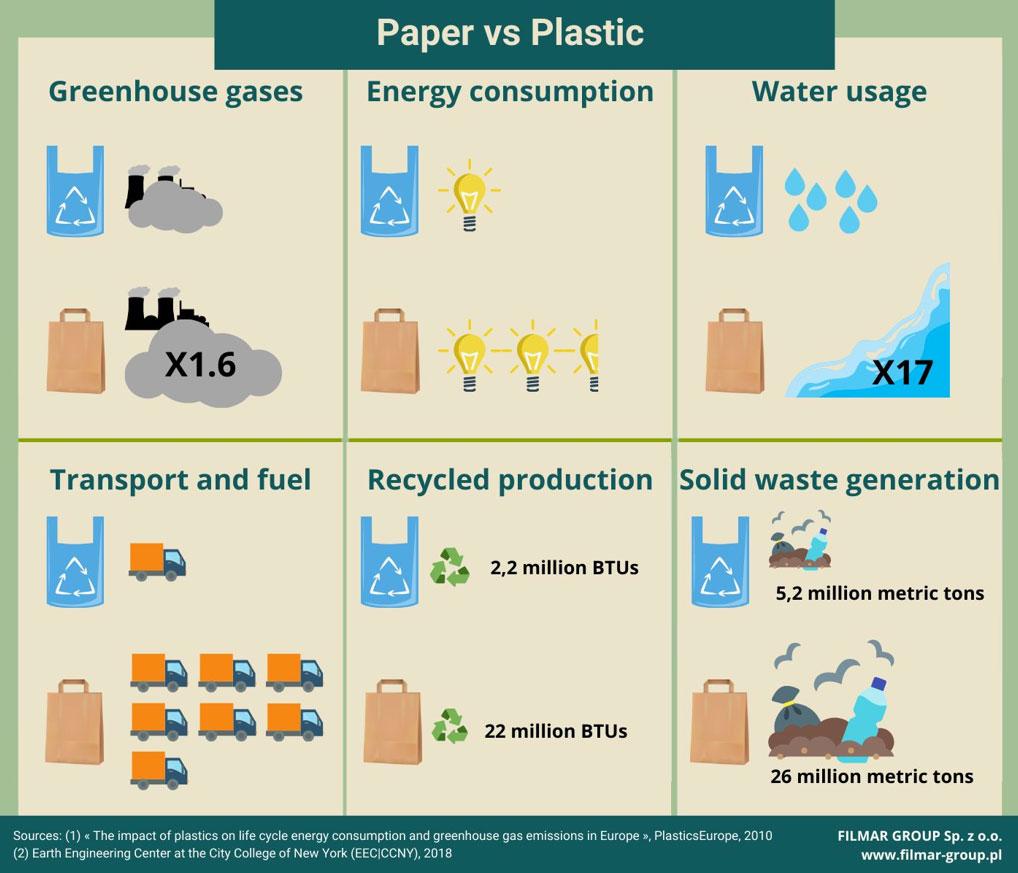
Sources:
Report on the State of the Global Paper Industry – Environmental Paper Network (2018)
Comparison of Environmental Impact of Plastic, Paper and Cloth Bags – Northern Ireland Assembly (2011)
Paper or plastic packaging, none is ideal as both consume energy and produce waste. In this context, the biggest positive gesture you can do for the environment is reducing your amount of packaging by investing in high-quality and highly resistant packaging solutions, AND favor packaging made from recycled plastic or recycled/FSC certified paper!
Recycled materials do not only conserve the natural resources and the energy that would be required to produce plastic or paper from scratch, but also help to reduce the excess plastic and pulp packaging from damaging the environment.
Main benefits of buying recycled products or products made from recycled materials:
1. Reduces Waste and Pollution
2. Conserves Landfill space
3. Saves Money and Creates jobs
4. Uses less Energy and Fewer New Resources
Also, by buying products made from recycled materials, you support industries and businesses which invest in recycling and recovery innovations, giving them the opportunity to use their waste as new inputs in their manufacturing process. This is what we call “the recycling loop”.
